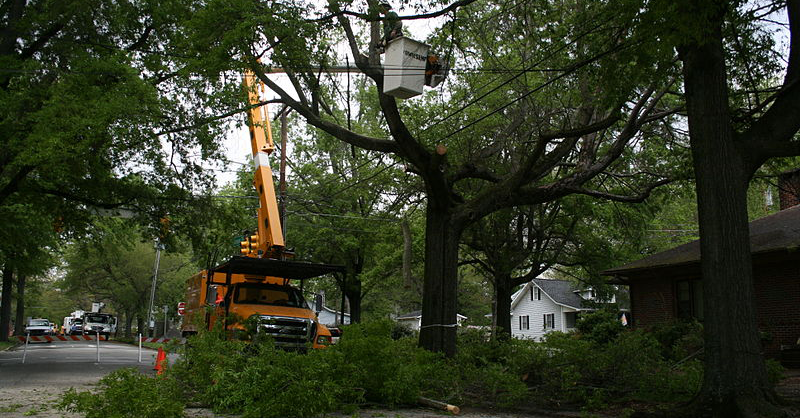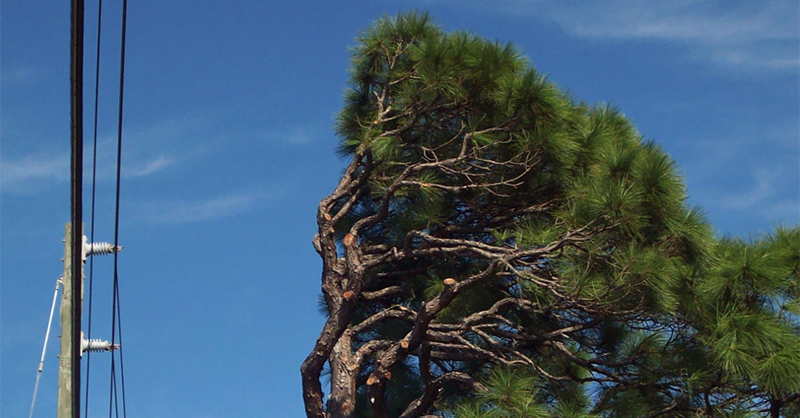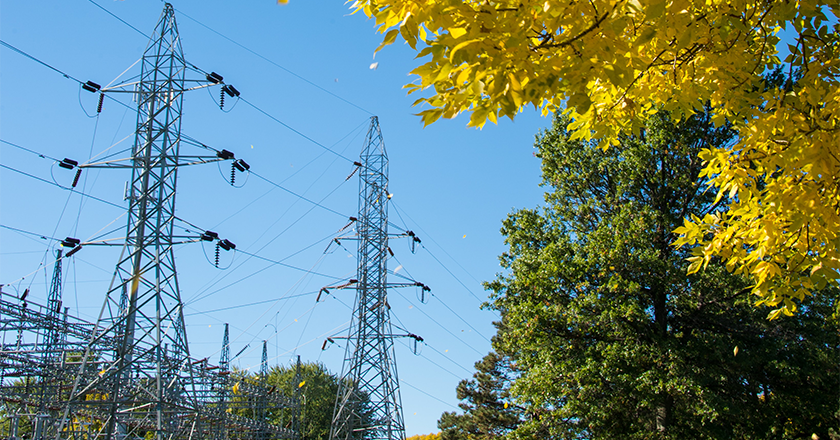In recent years, cyber attacks have become the foremost concern for utilities. A successful attack on a utility harbors a lot of destructive potential, hence why utilities are the focus of many malicious actors.
Any possible outage instigators are always on the minds of utilities, too, and the reason for a handful of programs, including vegetation management.
In an ongoing learning process, I’ve discovered that it’s a tried-and-true operation for utilities, one that plays a vital role in keeping the power flowing through both disasters and status quo. And much like other critical operations, there’s a lot of actionable data to be had in vegetation management.
Vegetation Management Basics
Avid gardeners and horticulturalists alike know the most important step in keeping plants in line: pruning. The same concept applies for utilities practicing vegetation management, just on a much larger scale.
Gardeners have a much easier go of it, however. Utilities often deal with mature trees and wild growth, which requires a whole new belt of tools. The removal of brush is done with power saws and other motorized equipment. Vegetation managers also authorize the judicious use of herbicides and growth regulators on trees.
For utilities, vegetation management is an act of preventive maintenance. By keeping branches away from powerlines, utilities can limit blackouts during both status quo and disasters. Being a step ahead of the plants drastically cuts the window of opportunity for incidents and the associated losses utilities can incur from them.

Surveillance wraps into vegetation management, too. Utilities also track trees based on their disruptive potential.
Two types of trees catch the eyes of vegetation managers. The first are danger trees. These trees are healthy trees whose continued growth comes with risk. If the branches of a tree have the potential to contact the powerlines, it’s considered a danger tree and is targeted for trimming.
Hazard trees are much harder to tackle. These are often damaged, dying, or dead trees with structural weak points that, when stressed, could contact a line, compromise the flow of power, and cause an outage.
Daily Operations and Disasters
Vegetation managers track these trees because they pose a serious risk to the flow of power to businesses, homes, and other institutions.
It’s no surprise that incredible amounts of energy travel through transmission lines, and the same could be said for distribution lines, even if it’s to a lesser degree. Touching these lines is enough to set them off and cause a release of that energy, an outage, and damage to the ecosystem. Danger and hazard trees come scarily close to doing this, hence the careful eye and mitigation strategies utilities employ.
This is a day-to-day worry for utilities, and the reason for vegetation management. Unchecked growth, a sudden structural compromise, or even a strong gust could cause some trees to make contact with powerlines.
Disasters only amplify the risk trees pose to powerlines. A hurricane, tornado, or blizzard could easily cause arboreal interference. These events put abnormal amounts of stress upon healthy and compromised trees, making an outage more likely, which makes vegetation management more imperative.
Where the Data Comes in
High-power transmission lines are typically out in the middle of nowhere surrounded by wildlife, while local distribution lines interface with vegetation woven into city and suburban landscapes. And with the 200,000 miles of high-power lines and 5.5 million miles of distribution lines in the US, a lot appears to be on the plates of vegetation managers.
As bonsai enthusiasts and green thumbs can tell you, trimming trees causes them to come back stronger and thicker. But if it’s done a certain way, this characteristic can be used to influence the directional growth of a tree. Crews can take advantage of this fact during the course of vegetation management by pointing the new growth away from powerlines. In some cases, however, the entire removal of a tree is a better option, which some utilities opt for.

This effort by utilities generates a lot of information, and a vegetation management program can benefit greatly from capturing that data. The latest inspections, pruning, herbicide application, and the presence of danger and hazard trees can all funnel into a program to make it as efficient as it can be. Even granular data, like the type of cut a crew makes to a tree, can be tracked and turned into actionable data. And with the right tools, this data can even be translated onto digital maps.
Why the Data Matters
Good data can elevate a vegetation management program. But if a program is already functional and is able to prevent a significant amount of vegetation related outages, why invest more in the program?
Preventing outages is a utility’s responsibility. A more efficient program, such as one running off of data, will lead to less powerline-tree incidents. Regulations also make maintaining the grid an imperative, as fines from federal agencies could follow a preventable tree-related outage. There’s also the moral and ethical side of this too, as an outage can have a severe, or even dire, impact on the daily lives of many people.
At 2019 DistribuTECH conference, Elizaveta Malashenko noted that 12 wildfires during October 2017 were caused by power equipment. She also presented research that found 10% of wildfires in California resulted from equipment failure, with the number one cause being vegetation and powerline contact.
Malashenko’s research highlights the collateral damage of poor vegetation management. Another speaker at this session echoed this concern, and one speaker noted how data can be fused into the process to create a more efficient program, one that prevents wildfires caused by utility equipment.
A data focused program also introduces extensive records. The records can inform a lot of decisions, and help a team ensure they aren’t causing too much damage to the ecosystem their lines exist in. This comes with another regulatory concern, as unnecessary destruction of the environment can come with consequences.
So how does that data affect a vegetation management program? All of the tracked actions create a comprehensive view of all the mitigation efforts a team is engaged in. This enables thorough analysis and informed decision making. From this view, a vegetation manager can easily pinpoint if more needs to be done, when to revisit and trim certain trees, or if the team should employ new mitigation strategies in the area.
The data also creates a natural queue based on priority. Regular inspections can find new developments, such as new danger or hazard trees. With this data on hand, a team can address these trees first and reduce the likelihood of a blackout. The data, therefore, enhances awareness and allows a team to monitor powerlines much more closely.
Tree-Proofing the Grid
Vegetation interference is the number one cause of blackouts in the US. While the top concern for utilities is now cyber attacks, their threat shouldn’t divert attention from running a solid vegetation management program. With the right data, a utility can ensure vegetation inflicts as little damage to the grid as possible.








